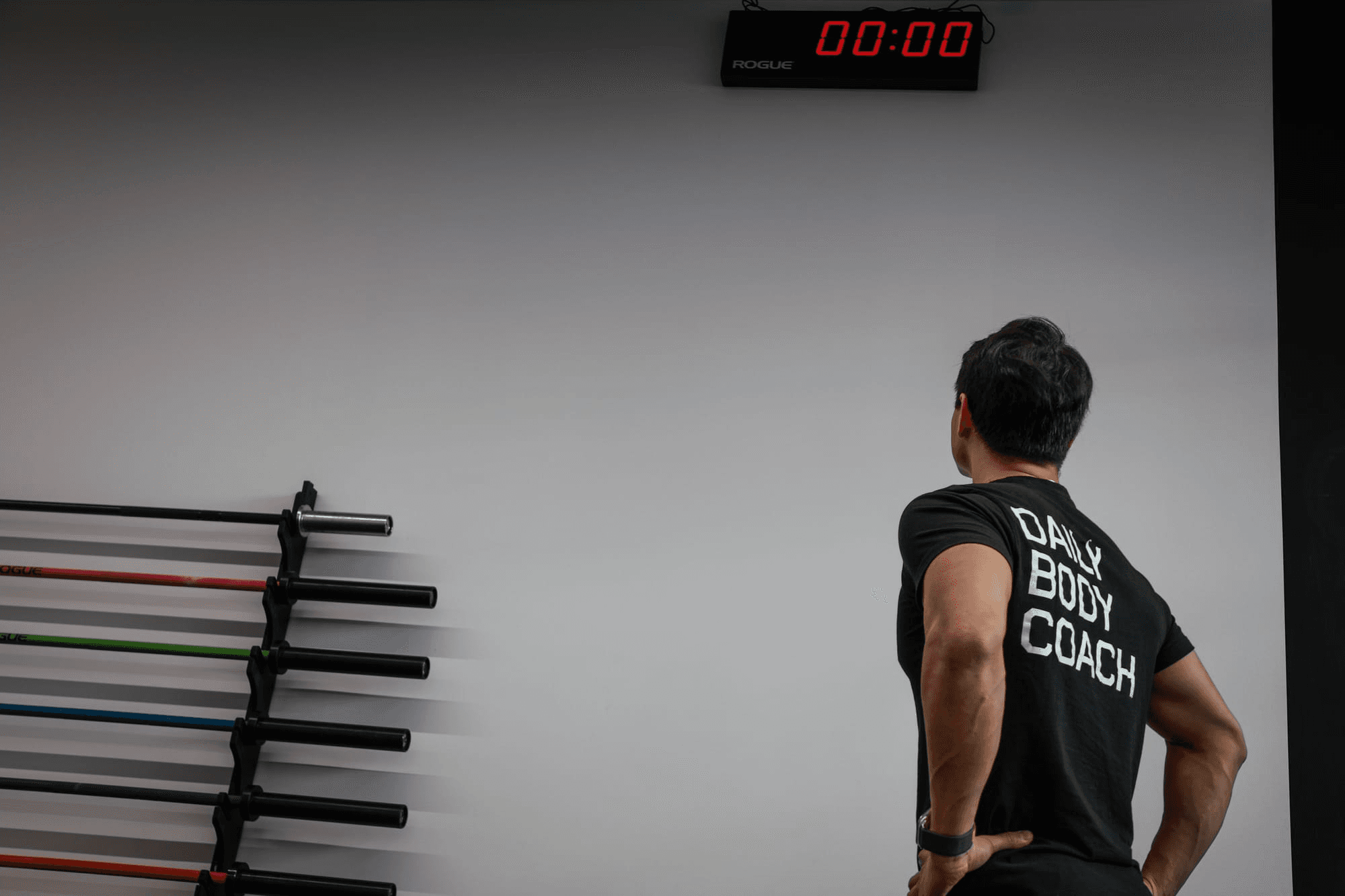5
min read
With a packed schedule, finding time for exercise can feel overwhelming—especially if you’re unsure where to begin or feel uneasy about hitting the gym. Or maybe you’re just looking for a way to stay active throughout the day to complement your fitness routine.
Either way, walking is an easy addition to your day—despite its simplicity, it can have a significant impact on your energy, focus, and overall well-being.
In this article, we’ll explore how many steps to aim for each day and simple strategies to work this habit into your life, while staying focused on what matters most: growing your business.
Why Should I Walk More?
Because your time is precious and walking is a great way to improve your health, mood and energy without sacrificing it. This simple habit can:
Support Weight Loss and Management: Walking helps you burn calories, making it an effective way to manage your weight or lose excess pounds
Improve Physical and Mental Fitness: It keeps you active and counters a sedentary lifestyle, which reduces the risk of chronic diseases like heart disease, diabetes, and obesity while boosting your overall energy and well-being
Minimize Strain from Exercise: Walking is a low-impact activity that puts less stress on your joints and muscles, making it a safer choice for people of all ages and fitness levels, especially those with joint issues or recovering from injuries
Lift Your Mood: Regular walking can improve your mood and enhance mental clarity, helping you stay sharp for those late afternoon meetings
How Many Steps Should I Do Per Day?
For most adults, the recommended daily goal is 10,000 steps—approximately 8 km (5 miles). However, the ideal number of steps can vary based on several factors:
Age
Fitness Level
Goals
Time Available
Start slow and work your way up to the ideal number of steps based on your goals, adjusting as needed along the way. Here are some guidelines to help you get started:
If you’re walking less than 5,000 steps per day: Aim to increase to 7,000 steps, then work towards 8,000 steps, and keep increasing gradually until you reach your desired number (find out what’s this number in the next section)
If you’re walking 7,500 - 10,000 steps per day: Look for simple ways to boost your count to at least 10,000 steps daily, then continue to build from there
If you’re walking more than 10,000 steps per day: Keep up the good work and consider increasing your steps to achieve a more specific goal
While this guide serves as a solid starting point, having a clear vision of your objectives is essential—just like in business. Reflect on your current fitness goals and read on to find out how many steps you need to take each day to stay on track.
What’s the ideal number of steps for my goal?
First, it’s important to set your goals - if you’d like help with that part, check out this article! Once your goals are clear, here are some suggestions for your step count:
If you’re looking to lose weight:
Aim for an average of 10,000 to 12,000 steps per day, ensuring that at least 3,500 of those steps involve moderate to intense activity. You can achieve this by walking on elevated terrain or by picking up your pace.
If you want to stay active with an hectic traveling schedule:
Traveling is often a significant part of an entrepreneur’s routine, but it can disrupt your fitness progress, eating habits, and sleep patterns.
Incorporating an extra 4,000 steps per day on top of your average step count can help mitigate these challenges in several ways:
Maintains Your Fitness Routine: Travel can throw off your regular exercise habits. By adding extra steps while exploring new places, you stay active and keep your fitness goals in check, even when you’re away from home and your usual gym
Combats Sedentary Behavior: Long periods of sitting during travel—whether in meetings, planes, trains, or cars—can take a toll on your body. Increasing your step count helps counteract the effects of prolonged inactivity, reducing stiffness and improving circulation
Aids Digestion: Specially when done after a meal, walking can help alleviate bloating and discomfort. This is particularly important when dealing with different cuisines and meal schedules
If you want to improve your fitness level:
Aim for 10,000 steps per day while focusing on increasing the intensity of your walks. You can achieve this by walking faster, climbing hills, or hiking. Trails are a fantastic way to accumulate steps, elevate intensity, and improve your mood—connecting with nature can be a powerful way to unwind from a hectic daily routine.
How to seamlessly increase step count
The truth is that sometimes your routine won’t allow you to go out for a walk. Your life is busy, and time is precious. But that doesn’t mean you can’t get your steps in. Here are a few strategies to increase your step count without taking up extra time:
Take the Stairs: Whenever possible, choose stairs over elevators or escalators—whether at work, in buildings, or parking garages. This simple switch can significantly boost your daily step count.
Walk During Phone Calls: Instead of sitting while on the phone, take the opportunity to walk around your home or office. This way, you can accumulate steps without impacting your daily schedule.
Incorporate Walking into Your Routine: Look for chances to walk during your daily activities—commuting to the office, heading to the gym, taking the kids to school, or visiting the supermarket. You can even get off public transport one stop early and walk the rest of the way.
Avoid Driving When Possible: Limit your use of the car unless absolutely necessary. If you need to drive, consider parking further away from your destination.
Use a Treadmill at Home: A treadmill is a great option for indoor walking, especially on rainy days. You can work, catch up on calls and do team meetings while you walk.
Kind reminder
We can’t change what we don’t measure. Consider using your smartphone, smartwatch, or a pedometer to track your daily step count for better consistency. If you don’t hit your target for the day, don’t be discouraged—focus on your weekly total and aim to make it up. You’ve got this!
If you want to discover the best strategies for your specific goals in walking, training, or nutrition, reach out to your certified coach and let’s get you there!













